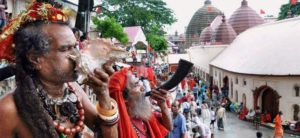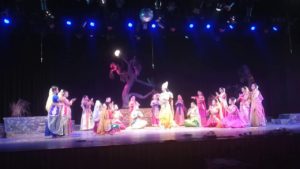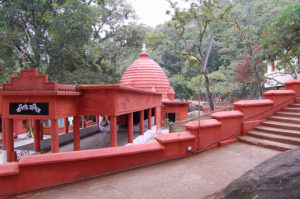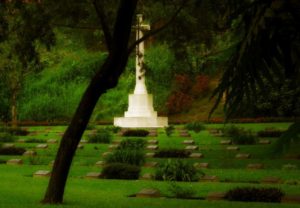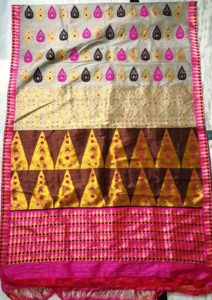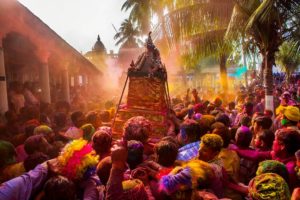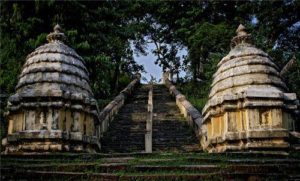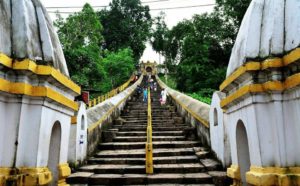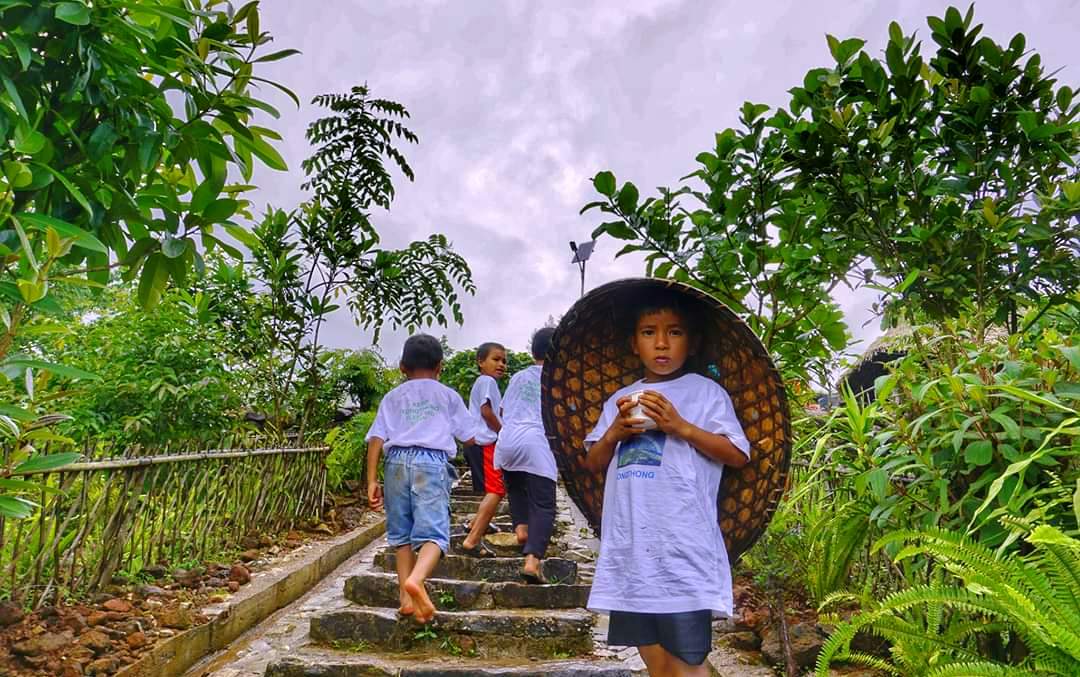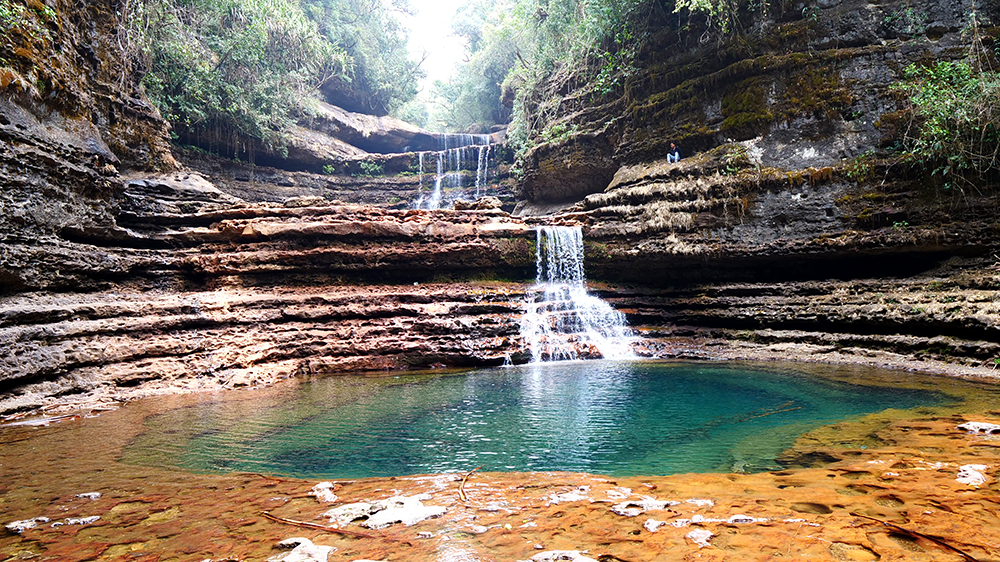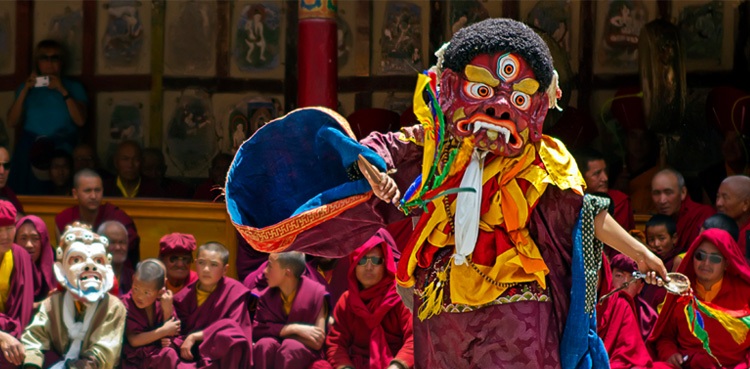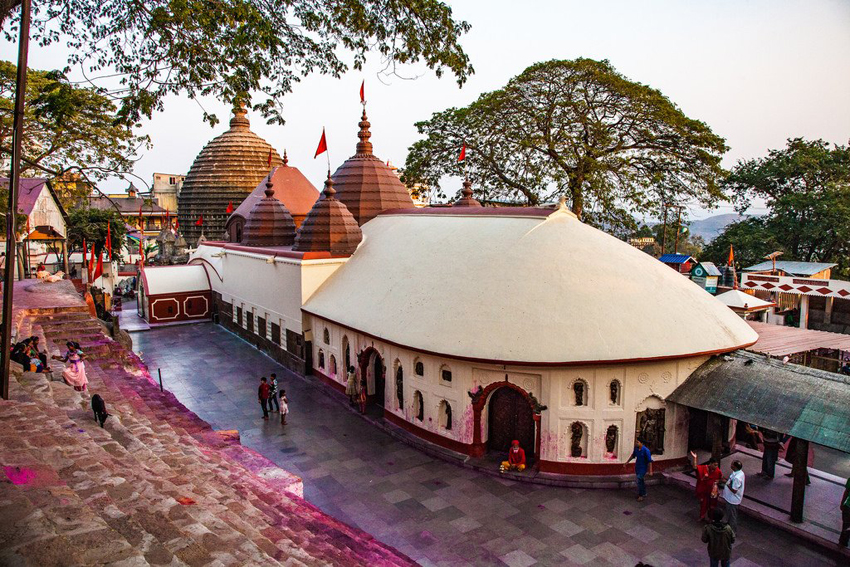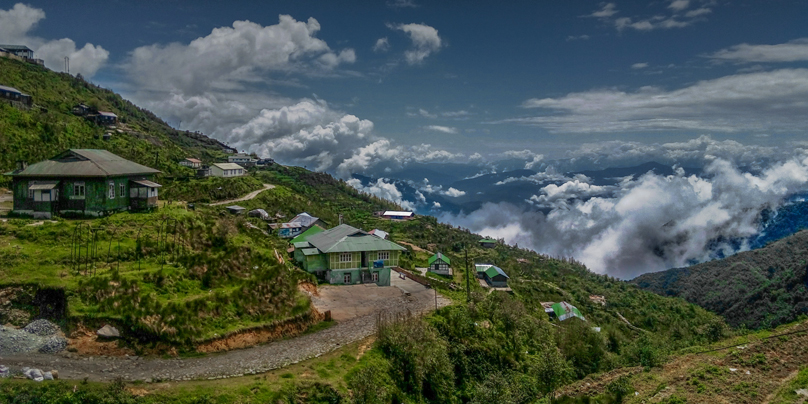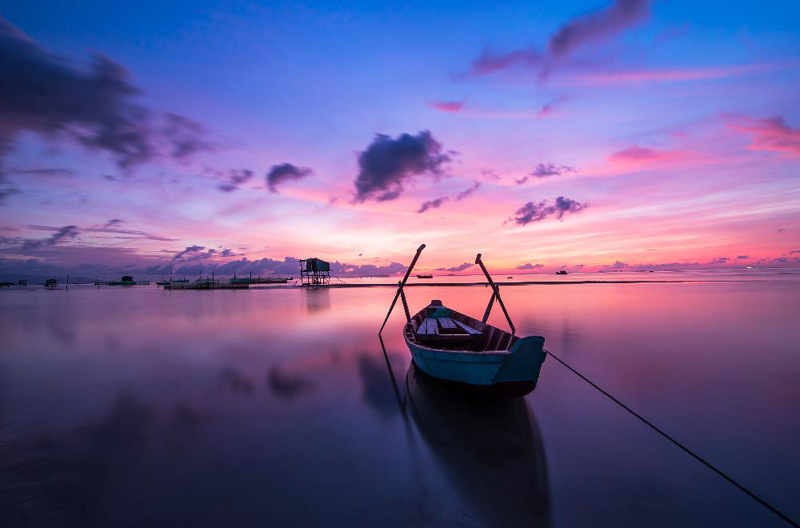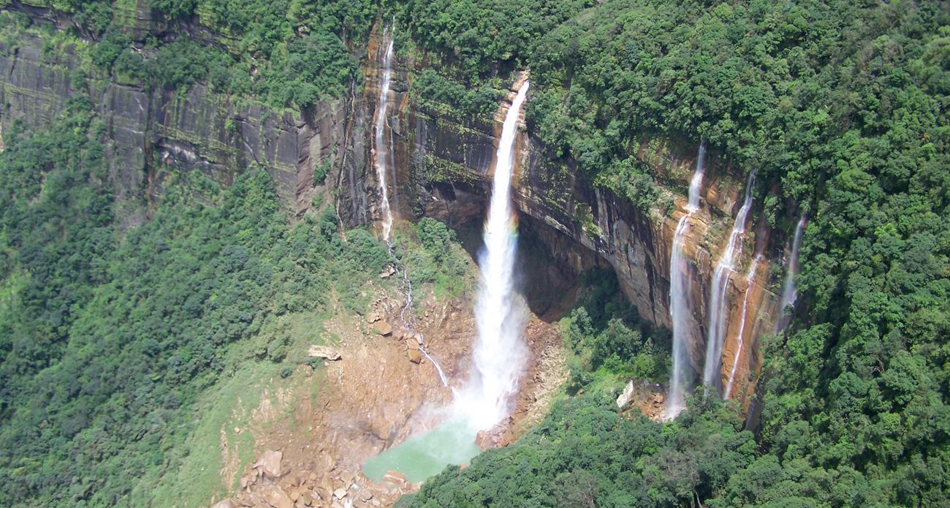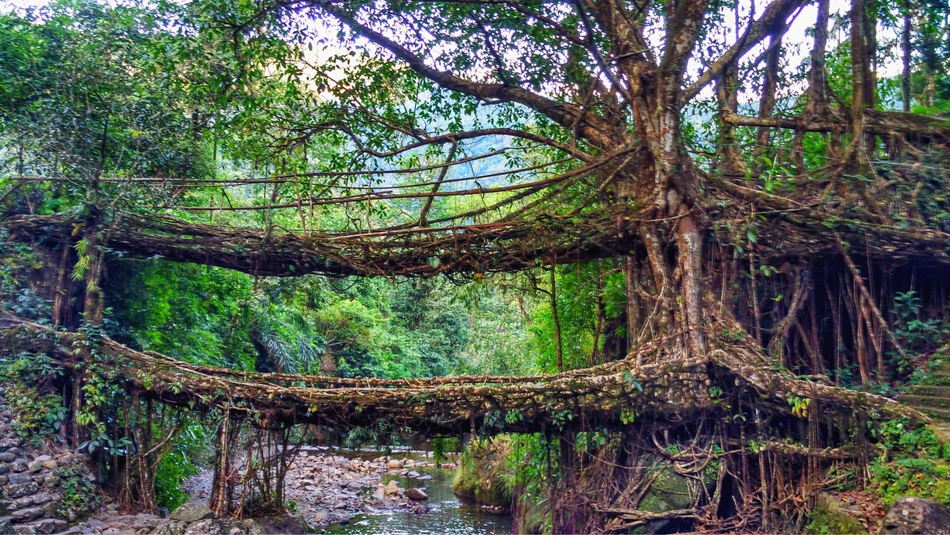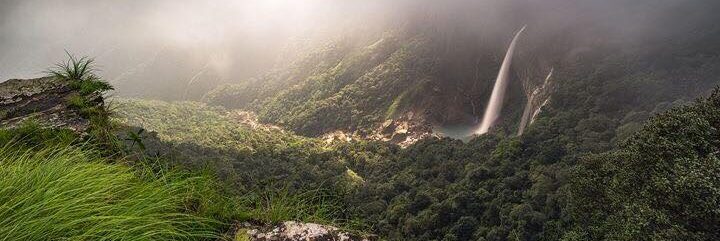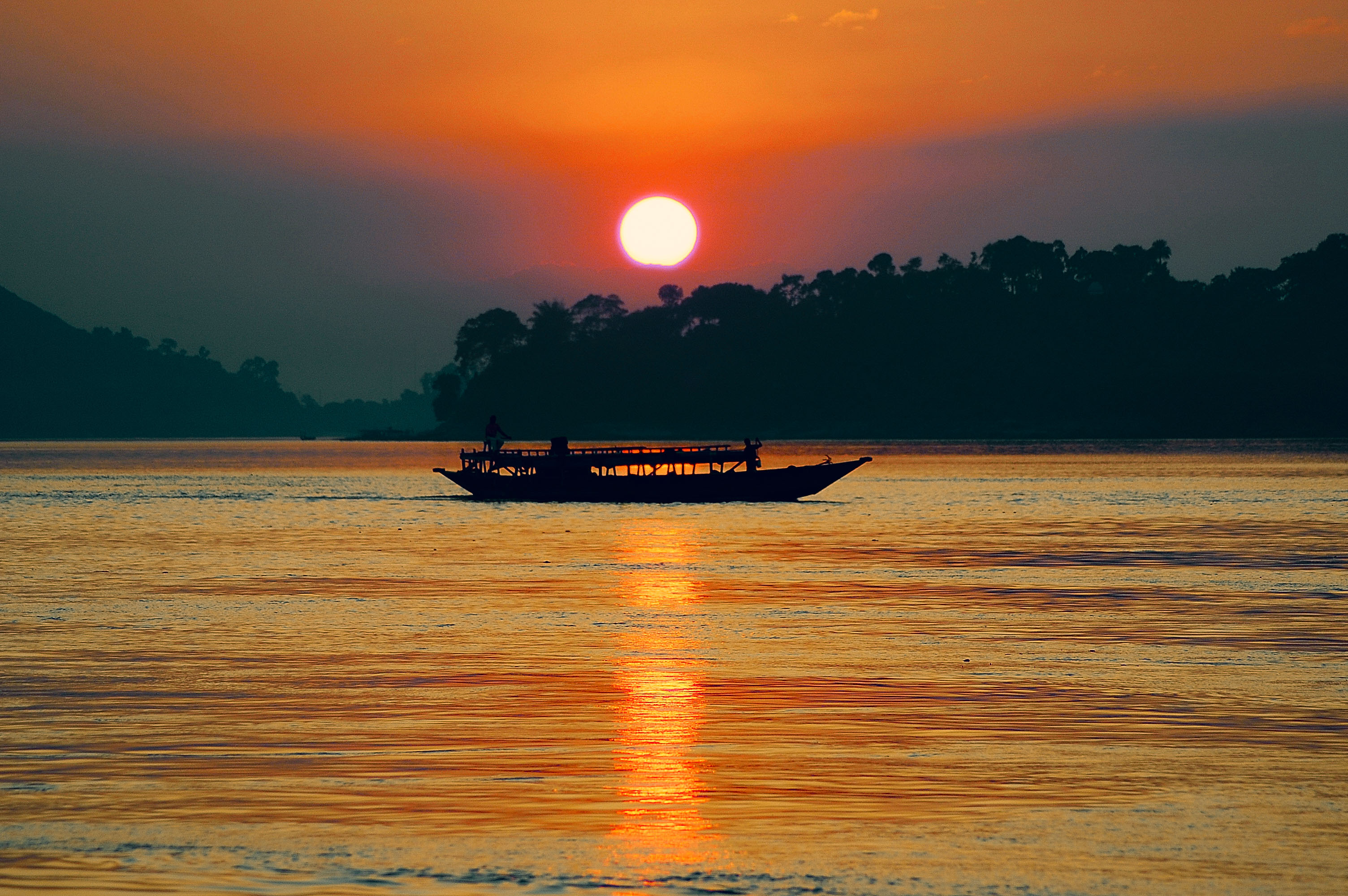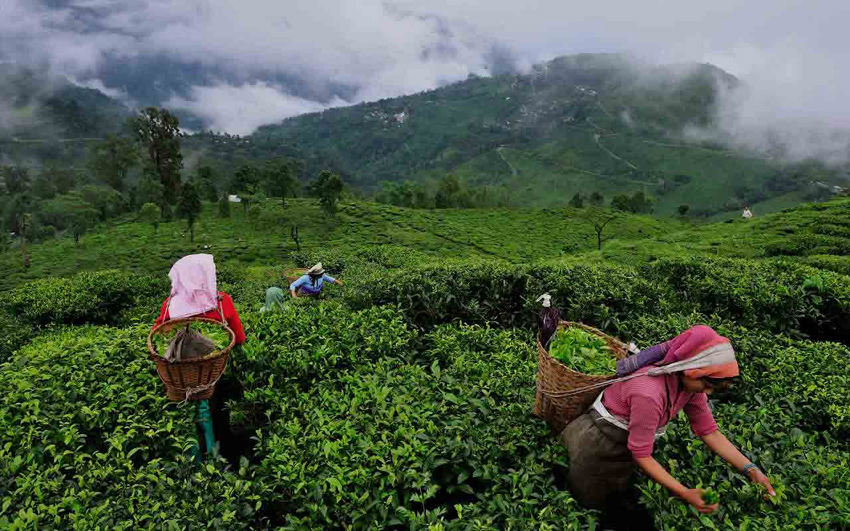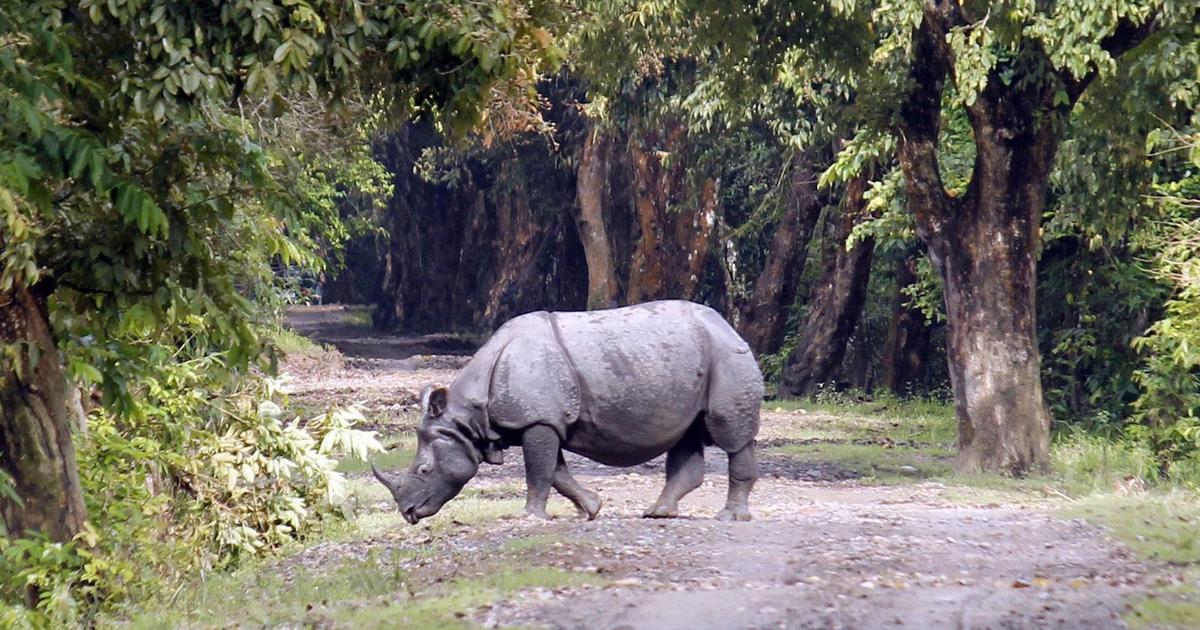Guwahati is situated on the Southern bank of the mighty River Brahmaputra in Kamrup district of Assam. Previously it was known as Pragjyotishpur (The City of the eastern Light) Guwahati is the fast growing premier city and it is also the gateway to the North Eastern states of India.This city subsequently got the name Guwahati (Guwa-means beetlenut and Hat –means market in Assamese)
Places to visit
- Sadhus at Kamakhya Temple during Ambubachi Festival
Kamakhya Temple: The origin of Kamakhya Temple is pre Aryan situated atop the Nilachal Hill And is the foremost shrine of Assam, The Kamakhya is an ancient seat of Tantric and shakti Cults of Hinduism. The original temple was destroyed by the invading Muslims in their crusade against Hindu temples and idols in the early part of 16th century. Ultimately it was restored from ruins by King Naranarayan of the Koch dynasty and rebuilt in its present form in 1665 AD.
- Umananda Temple
Umananda Temple: In the vicinity of Guwahati in the middle of the river Brahmaputra on an island hill stands the temple of Shiva ‘Umananda’ (also known as Peacock Island). It is also known as ‘Bhasmachal’ as the rays that emanated from his forehead reduced Kamdev to ashes. Within the temple are to be seen the images of Anandi Shiva Linga and a silver ox and Umananda with five faces and ten handshands.
Navagraha Temple: To the extreme east of Guwahati on the Chitrachal Hills stands the Navagraha Temple (Temple of Nine Planets) is a center of Astrological and Astronomical research. The government conducted research here, and as a result of excavation twelve Shiva Temples have been un earthed.
- Sankardev Kalakhetra
Shankardev Kalakshetra: a place where Assamese history and culture is depicted in a sprawling open enclosure. It has a beautiful museum where they preserved the masks (these masks are made in Majuli island), the traditional dresses and the jewellery of the entire North East India. A Namghar (Assamese prayer Hall) and an open air theatre has been constructed to perform plays and other cultural activities during festivals.
- Vasistha Ashram
Vasistha Ashram: This Ashram was established by the great sage Vasistha on Sandhyachal Hill. By the force of penance and meditation, the sage Vasistha had opened the Ganges into three flows called ‘Sandhya’, ‘Lalita’, and ‘Kanta’. The sage Vasistha every day offered worship at the confluence of the three courses of the Ganges. Many people assembled during eclipses (Solar & Lunar).
- Guwahati War Cemetery
Guwahati War Cemetery: Built and maintained by the Commonwealth War Graves Commission. The cemetery was started during the war when several military hospitals were posted in the area and was originally for burials from these hospitals. There are now 517 soldiers buried in this cemetery.
- Assam Silk
Sualkuchi: Sualkuchi is known to be the Manchester of the East and it is famous for the Assam Silk. This place is also known as the “Silk Village”. The ‘Muga’, the golden silk of Assam is made known to the world way back in 1662 by a French traveler Jean Joseph Tavernier. The silk was the royal fabric of the Ahom King who ruled Assam for six centuries till 1826.
- Daul Govinda Temple
Doul Govinda Temple: Doul Govinda Temple is one of the famous temples of Assam. It is situated on the northern banks, on the foot hills of Chandrabharati hill at Rajaduar, North Guwahati. The temple is mainly devoted to Lord Krishna. Besides, there is an Namghar along with the temple within the same premises. Several stories exists regarding this deity and how ‘He’ was brought here by late Ganga Ram Barooah from a place called Sandhyasar near Nalbari. The first structure of Doul Govinda Temple was erected more than one hundred and fifty years ago but it was again renovated in 1966. The Doul Govinda Mandir in Assam is famous for its Holi celebrations in the month of February – March. Holi is observed by the local people for five days with various programme and about five thousand Pilgrims are always assembled at the Mandir premises during this time.
- Ashwaklanta Temple
Ashwaklanta Temple: Aswaklanta Temple was built by Ahom King Shiva Singha in 1720. Shiva Singha built most of the biggest Hindu temples of Assam including the famous Shiva Dole of Sivasagar. The temple is situated by the bank of mighty Brahmaputra. There are two temples in that holy place. One situated in the foot hill and the other in the up hill – Kurmayanardan and Anantasayi by name.
The place where the temples were built holds hindo mythological importance. Mythology says that while Lord Krishna searched for Narakasur to kill him, his horse got tired in this place.This is how this place was named Aswa-Klanta. Aswa means ‘Horse’ and Klanta means ‘Tired’ in Assamese. According to another legend, horses belonged to Arjun, the great Pandava and friend of Krishna, were persuaded in this place to stay back from the better scene so that Abhimanyu could get killed. It was a conspirancy and called ‘abhikranta’ in assamese. From this word the place was named as Aswa-krata. And later it became Aswaklanta in popular language.
The temple was damaged in the great earth quake of Assam in 1897. But it was reapired under patronage of lord Kurzon, then viceroy of Assam.
- Hayagriva Madhab Temple Hajo
Hayagriva Madhava Temple: Hayagriva Madhava Temple is situated on the Monikut hill. The present temple structure was constructed by the King Raghudeva Narayan in 1583. According to some historians the King of Pala dynasty constructed it in 6th century. It is a stone temple and it enshrines an image of Hayagriva Madhava. Some Buddhists believe that the Hayagriva Mahhava temple, best known in the group of Hindu temples, is where the Buddha attained Nirvana. At this imposing temple, the presiding deity is worshipped as the Man Lion incarnation of Vishnu by the Hindus.[1] It is a stone temple and it enshrines an image of Hayagriva Madhav. The rows of elephants are seen on the body of the temple and they are fine specimens of Assamese art. There is a big pond known as Madhab Pukhuri near the temple. Doul, Bihu and Janmastami festivals are celebrated every year in the temple. Moreover this temple preaches both Hinduism and Buddhism, which attract Buddhist Monks from far flung places. Sayani, the first wife of Kalia Bhomora Borphukan donated a family of paiks and also a plot of land for their maintenance to the Hayagriva Madhava temple during the reign of Ahom king Kamaleswar Singha.




